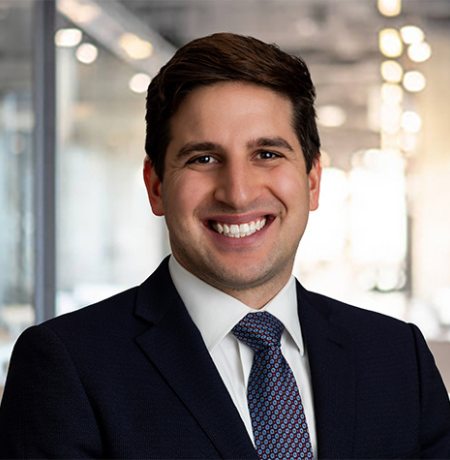If you reviewed the new Vizient/Kaufman Hall 2025 Trends Report, Strategy is (finally) back in the driver’s seat, you might have noticed one startling data point: a 1% increase in “loyal” patients (that is, patients who spend at least three quarters of their healthcare dollars within one health system) can yield a $40 million revenue boost for a $2 billion health system. It follows that loyal patients generate far more revenue than uncommitted patients do.
Unfortunately, patients usually are not loyal. A typical health system captures less than half of its patients’ total healthcare spend, according to the trends report. This means that patients are shopping around, or neglecting needed care altogether. Systems lose revenue as a result.
One key to stimulating loyalty among patients, as Ken Kaufman recently pointed out, is access: making it easy for patients to get into and stay within the system. Patients want to schedule appointments on their own timeline at their own convenience. This means timely appointments and a referral appointment system that functions seamlessly and keeps patients within the hospital’s care ecosystem.
But this is easier said than done. Health systems are resource constrained. Physician shortages are projected to worsen. The regulatory landscape is uncertain. In this environment, healthcare leaders should begin with a narrow scope of three distinct priorities to improve both how appointments are made and how long it takes to make them.
Case Study
Kaufman Hall recently engaged with a multi-hospital health system with more than 1,500 clinicians that was struggling to reduce scheduling complexities. Its complexities resulted in significant unused clinical time.
The situation
- Access was confusing to patients. Patient-facing websites listed hundreds of unique phone numbers for the system’s centers and clinics. One-third of its centers and clinics did not have links to web pages.
- There were limited patient-initiated and self-scheduling options and complex scheduling algorithms and decisions trees.
- Aggregate no-show rates exceeded 20%.
- There was limited constructive collaboration and coordination between referring and specialty practices.
The Three Priorities
The system undertook a project to identify three areas to address inefficiencies. This included:
- Leveraging technology to activate self-scheduling for new and established patients, with sub-specialty exceptions
Patients have become healthcare “consumers,” and their expectations have increased. Patients want the care to be technologically advanced; one recent study published in Journal of General Internal Medicine found that nearly half of people use technology to communicate with their providers. This health system recognized that if steps in accessing care are complicated, patients will simply switch to the competitor down the road.
- Reducing scheduling decision-tree algorithms to a maximum of three questions for both online and contact center platforms.
The system found redundancies and inefficiencies in the questions. Many scheduling questions either a) played no part in routing to a particular physician, or b) the patient or call center staff was unable to answer due to complexity of the question. The overly complex algorithms, initially thought to drive efficiency, led to patients being scheduled with potentially the wrong provider.
- Allowing for cross-departmental referral scheduling (e.g., during primary care check-out, a patient is scheduled directly with a cardiologist)
Leadership recognized the importance of “systemness” and interdepartmental coordination. Leaders recognized that they needed to design a process that worked for patients, not the siloed structure of clinical departments, because patients do not see different departments and guidelines; they see barriers. Capturing the patient for the next visit while they are on site for a current visit allows hospitals to capture the referral in real time, saves back-and-forth and provides a cohesive, patient-focused experience.
Results
The initial implementation focused on a pilot of two clinics: an urban, high-volume clinic, and a rural, low-volume one. Initial key performance indicators were aimed at reducing appointment no-shows, increasing template utilization and driving volume of new patients seen within 10 days.
The initial results:
- From a baseline of zero, the urban clinic increased appointments scheduled online to 20%, the rural clinic to 13%. No-show rates dropped to 7% for both clinics. (The urban no-show baseline was 11%; the rural baseline was 15%.)
- The proportion of new patients seen rose from 35% to 50% for the urban clinic. For the rural clinic, the rate rose from 79% to 90%.
- Realized template utilization for the rural clinic rose from 63% to 82%, while the urban clinic's template utilization measure remained steady at 83% following implementation.
Final thought
Access improvements need to start with prioritizing just a few things
Patients express their unhappiness by not showing up for appointments, which leaves systems wasting unused time dedicated to seeing patients. Systems’ inability to meet consumers where they are leads to frustration, erodes trust and puts loyalty at risk. But access also represents an opportunity for health systems.
Patient access is a complex process for healthcare. Transforming this to be patient-centric and accessible demands intentionality, starting with a few focused changes. Done correctly, access can deliver a value-driven experience for patients. To quote from the Vizient/Kaufman Hall trends report: “This means developing access points that prioritize convenience, meet the needs of different segments in an individualized way, encourage engagement and build lasting trust.”












